News

Milinda Moragoda Speaks at the 4th India–Japan Forum in New Delhi and Meets with Senior Leaders
Milinda Moragoda, Founder of the Pathfinder Foundation, was invited by India’s Ministry of External Affairs and the Ananta Centre to participate in the 4th India–Japan Forum, held recently in New Delhi. In his presentation, he proposed that India consider taking the lead in a post-disaster reconstruction and recovery initiative for Sri Lanka, with Japan serving as a strategic partner in this effort.
The same theme was addressed in a recent op-ed article by Moragoda submitted to the Hindustan Times. The forum itself covered a broad range of issues related to India–Japan cooperation, including economic security, semiconductors, trade, nuclear power, digitalization, strategic minerals, and investment. During his visit to New Delhi, Moragoda also held meetings with several senior Indian leaders, including External Affairs Minister Dr. S. Jaishankar; Finance Minister Smt. Nirmala Sitharaman; Foreign Secretary Vikram Misri and other senior policy makers. The India-Japan Forum provides a platform for Indian and Japanese leaders to shape the future of bilateral and strategic partnerships through deliberation and collaboration. The forum is convened by the Ministry of External Affairs, Government of India, and the Anantha Centre.
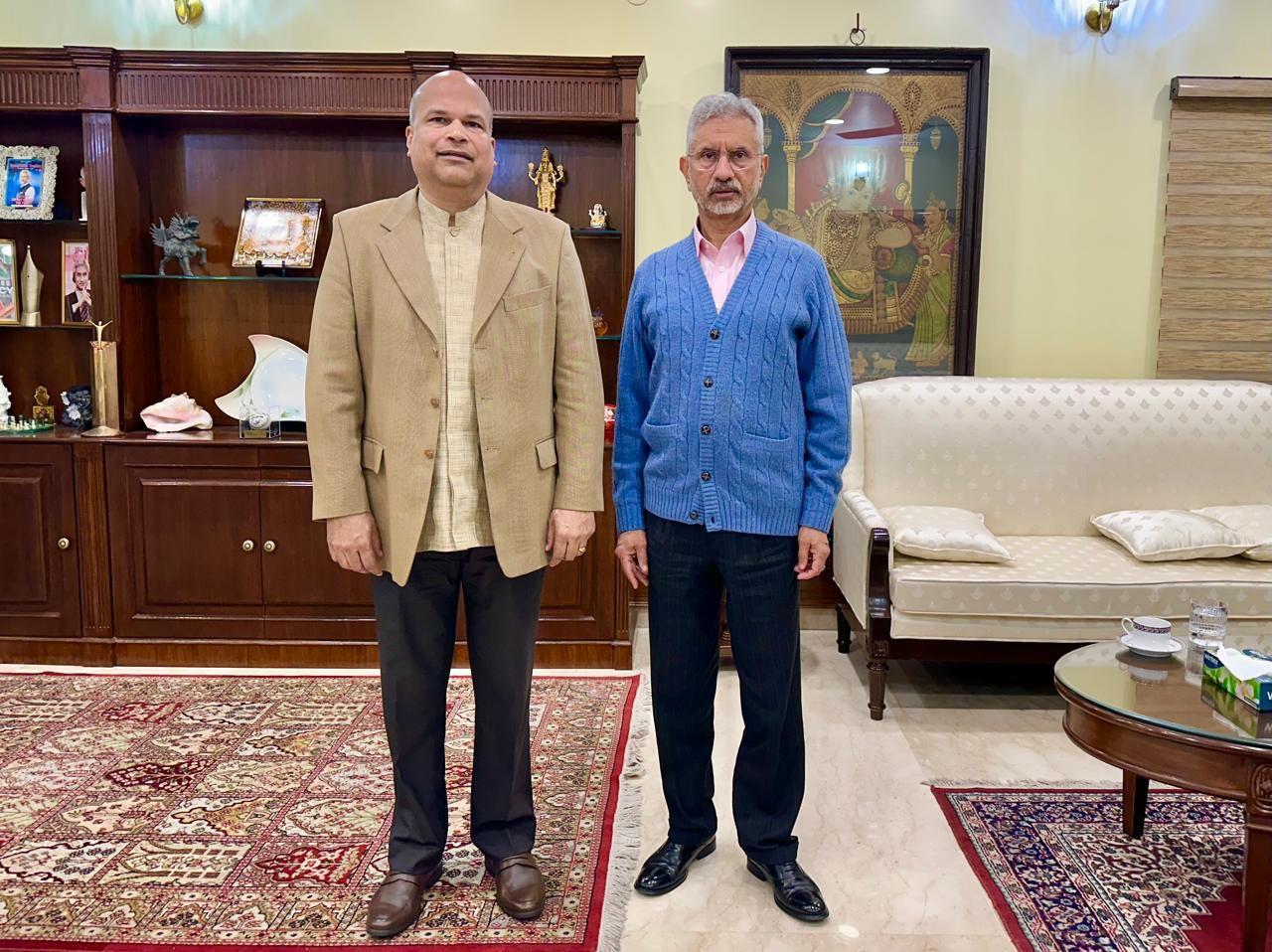
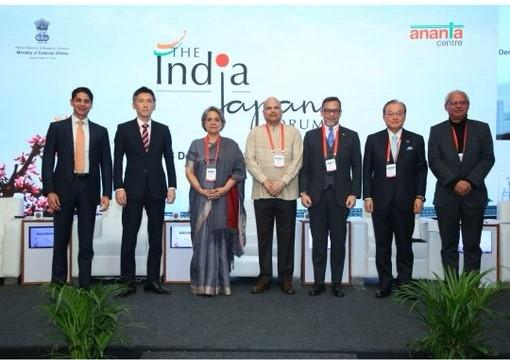

Sri Lanka Navy Marks 75 Years with Promotions for Over 2,000 Personnel
The Sri Lanka Navy has granted promotions to 17 officers and 2,069 senior and junior sailors as part of its 75th anniversary commemorations. The Navy celebrates this significant milestone today (09), marking the occasion with a number of ceremonial events that highlight longstanding naval customs and religious observances.
According to the Navy, the promotions were approved on the recommendation of the Commander of the Navy, Vice Admiral Kanchana Banagoda. The gesture forms a key component of this year’s anniversary celebrations, underscoring the service’s recognition of commitment and professionalism within its ranks.
The Navy’s 75th anniversary programme includes traditional ceremonies and religious rituals, reflecting both the heritage and continued evolution of the maritime force.

Corporate Grip on Rebuild Fund Raises Alarms over Transparency
Sri Lanka’s ambitious Rebuilding Sri Lanka Fund, launched to consolidate donor financing and rebuild cyclone-ravaged communities, is already under heavy scrutiny. What was announced as a national, inclusive platform for recovery has shifted into a governance battle over corporate influence, opaque decision-making and inadequate safeguards.
At the centre of the controversy is the 11-member Management Committee, comprised solely of men—most of whom are chairmen, CEOs and senior directors of leading conglomerates.
Their simultaneous roles as custodians of public reconstruction money and heads of companies likely to benefit from reconstruction contracts have triggered conflict-of-interest warnings from economists, legal experts and civil society.
The Fund’s mandate, as published, grants sweeping powers: raising money, prioritising recovery projects, approving disbursements, and designing long-term development interventions.
However the public has been given no clarity on the Fund’s legal structure, whether it is constituted by Act, Gazette or executive authority. This absence of legal grounding, critics argue, exposes billions of rupees to risks of misallocation.
Even more concerning is the lack of a public procurement framework governing how reconstruction tenders will be awarded.
Without transparent criteria, independent audits, or parliamentary reporting obligations, analysts warn the Fund could become a “parallel state” operating beyond normal financial controls. Critics say this opens the door for preferential treatment, insider contracting and politicised resource distribution.
The Fund’s oversight is nominally attached to the National Disaster Management Council, but officials have not clarified whether this oversight is binding or merely advisory. In the absence of detailed rules, watchdog groups warn that supervision may be symbolic.
Civil society groups say the committee’s composition violates basic principles of disaster-governance: diversity, inclusion, technical expertise and community representation.
Entire sectors including women, regional communities, humanitarian experts, environmental specialists and local-level responders are absent from the committee. This, they argue, undermines the Fund’s credibility and threatens reconstruction outcomes.
The appointment of four presidential nominees among the six non-corporate seats further erodes confidence, fueling accusations that the platform has become an extension of executive authority rather than a participatory national recovery mechanism.
The controversy emerges amid a wider pattern. Recent all-male appointments to the Clean Sri Lanka Presidential Task Force and the Archaeological Advisory Committee signal a worrying institutional trend that sidelines women and minority communities.
Analysts warn that Sri Lanka cannot afford another credibility crisis. With expectations that the Rebuilding Sri Lanka Fund will grow into a multi-billion-rupee pool attracting foreign contributions, the absence of legal, ethical and procedural safeguards could jeopardise donor confidence and reconstruction timelines.
Civil society groups are urging the government to reconstitute the committee, establish a legally-binding governance structure, and implement strict conflict-of-interest and procurement regulations. Without such reforms, they argue, the Rebuilding Sri Lanka Fund risks becoming a symbol of exclusion rather than a vehicle for national recovery

Cyclone Warnings Are Government’s Duty, Not Opposition’s - Marikkar
Samagi Jana Balawegaya (SJB) MP S.M. Marikkar stated today that issuing warnings about impending cyclones is the responsibility of the government—not the opposition.
His remarks came in response to a statement by Deputy Minister Mahinda Jayasinge, who claimed the opposition should be held accountable for failing to share information they allegedly had regarding the recent cyclone.
“Doesn’t Deputy Minister Jayasinge understand that he is part of the government?” Marikkar asked, adding that the deputy minister appeared to be behaving more like a member of the opposition.

Landslide Reported in Bogahapathana; No Injuries or Damage Confirmed
A landslide has been reported in the Bogahapathana area of Meegahakiula, though authorities confirm that no injuries or casualties have occurred. Emergency teams moved in quickly to evacuate residents as a precaution, directing them to designated safe centers.
However, reports indicate that several families have chosen not to leave and have remained in their homes despite the risks. Officials continue to monitor ground conditions and are urging residents to follow safety instructions to prevent potential harm.

President AKD Thanks U.S. President Donald Trump for Support to Sri Lanka
President Anura Kumara Dissanayake has extended his appreciation to U.S. President Donald Trump for once again supporting Sri Lanka during a time of crisis.
The United States has pledged US$ 2 million in emergency relief assistance to aid Sri Lanka’s response to the devastation caused by Cyclone Ditwah, which brought widespread flooding and heavy rainfall across multiple regions.
In addition to financial aid, the U.S. has deployed two C-130J Super Hercules aircraft to bolster ongoing humanitarian and logistical operations.
President Dissanayake stated that the rapid deployment of aircraft, along with the emergency funding, demonstrates the strength of the long-standing relationship between the two nations — a partnership grounded in shared democratic values and deep ties between their people.

Heavy Rainfall Over 100 mm Forecast for Three Provinces Today
Showers and thunderstorms are expected across multiple provinces today (10), according to the Department of Meteorology. The heaviest rainfall - potentially exceeding 100 mm- is likely to occur in the Northern, North-Central, and Eastern provinces, while the Central and Uva provinces may experience fairly heavy showers of around 75 mm.
Isolated showers or thundershowers may also develop in several other parts of the island after 1:00 p.m.
The Met Department further noted that wind speeds could increase to 30–40 km/h at times over the Northern, North-Central, and North-Western provinces, as well as the Trincomalee district and the eastern slopes of the central hills.
Early-morning misty conditions are also expected in the Sabaragamuwa, Central, and Southern provinces.
Authorities have urged the public to remain cautious, particularly during thundershowers, to reduce the risk of damage caused by strong winds, lightning, and sudden localized weather events.

Yellow Anaconda Hatchling Reported Missing From Dehiwala Zoo
A Yellow Anaconda hatchling has gone missing from the Dehiwala National Zoological Gardens, prompting zoo officials to file a complaint with the Dehiwala Police.
The hatchling was one of seven snakes — including three other species — that were illegally smuggled into Sri Lanka from Thailand by a local woman on September 12, 2024. The snakes were seized by Customs officers at the Bandaranaike International Airport (BIA) and subsequently handed over to the Dehiwala Zoo for care.
According to Deputy Director of the Zoo, Kasun Hemantha Samarasekara, all six remaining snakes had been kept under quarantine and were scheduled to be showcased to the public once the mandatory quarantine period was complete.
He noted that the Yellow Anaconda is the heaviest snake species native to South America and stressed that the missing hatchling had never been part of the zoo’s existing collection prior to its transfer from Customs.
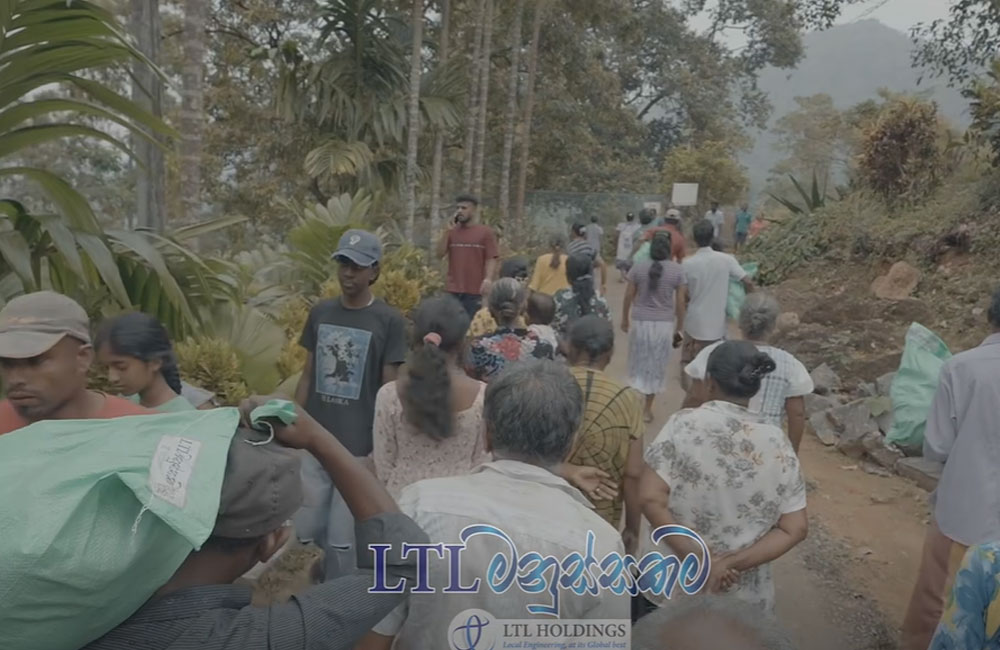
‘LTL Humanity’ initiative to fund long-term rebuilding efforts for displaced families
LTL Holdings has unveiled a nationwide relief programme aimed at supporting families affected by recent extreme weather, pledging immediate assistance as well as long-term recovery under a new initiative titled LTL Humanity.
The effort is being implemented in two phases, the company said in a statement.
The first phase centres on emergency relief, with 15,000 food parcels and other essential supplies being distributed to affected households over a two-week period.
More than Rs. 100 million has been allocated to ensure the rapid delivery of food items, hygiene kits and basic equipment for preparing meals at home.
The second phase will shift focus to long-term rehabilitation for communities hardest hit by flooding and related disruptions.
Upcoming projects include building homes for displaced families, repairing and reconstructing schools and children’s hospitals, and restoring damaged utilities such as electricity connections.
LTL Holdings said the programme is being carried out in partnership with national media organisations, youth and women’s groups, community organisations and volunteer networks to ensure swift and coordinated assistance.
Nuhuman Marikkar, CEO of LTL Holdings, said the initiative aims to provide both immediate relief and sustainable recovery.
“Our goal is not only to address urgent needs but to rebuild infrastructure and help restore normalcy in affected communities through a structured, phased approach,” he added.

Unity Plaza Unveils Landmark LED Display amid On’ally Holdings’ Legal Spotlight
Colombo marked a significant milestone on 3 December as Unity Plaza unveiled Sri Lanka’s largest outdoor LED digital screen, drawing an audience of over 250 guests, including the Board of Directors and senior management of On’ally Holdings PLC, representatives from international business partners, and members of the media.
The launch marks the culmination of Unity Plaza’s extensive redevelopment, which commenced with its relaunch in November 2023. The triple-faced LED display, prominently visible from Galle Road, Wellawatta, and Station Road, transforms the building into a visually striking landmark, reinforcing Unity Plaza’s stature as the nation’s premier IT hub while redefining Colombo’s commercial skyline.
While the event celebrated technological progress, it comes amid ongoing legal scrutiny of On’ally Holdings’ dealings with the Urban Development Authority (UDA) and Lanka Reality Investment PLC, the majority shareholder.
Industry analysts note that the company’s ability to complete such a high-profile project despite these challenges underscores both its resilience and strategic focus on long-term digital innovation.
On’ally Holdings Managing Director M.H. Jamaldeen described the LED installation as “more than a commercial display; it is a digital landmark connecting brands, citizens, and the city in real time,” reflecting the company’s vision to modernize Colombo’s urban identity.
The installation combines global and local expertise. Manufactured by China’s Charming and Co., a recognized leader in large-scale outdoor digital media solutions, and installed by On’ally Holdings’ internal engineering team, the project highlights Sri Lankan capability in executing complex, large-scale technical initiatives.
Experts suggest that Unity Plaza’s enhanced digital presence is poised to reshape Sri Lanka’s Digital Out-of-Home (DOOH) advertising market, offering high-visibility opportunities for technology and commercial brands while asserting the building’s role in Colombo’s urban modernization.
Beyond aesthetics, the LED screen signals the company’s determination to lead in technology-driven commercial spaces, even as legal matters with UDA continue to unfold.
As Unity Plaza moves into this new chapter, it exemplifies how strategic redevelopment and innovation can coexist with corporate governance challenges, positioning the building as a focal point of Sri Lanka’s evolving digital economy.
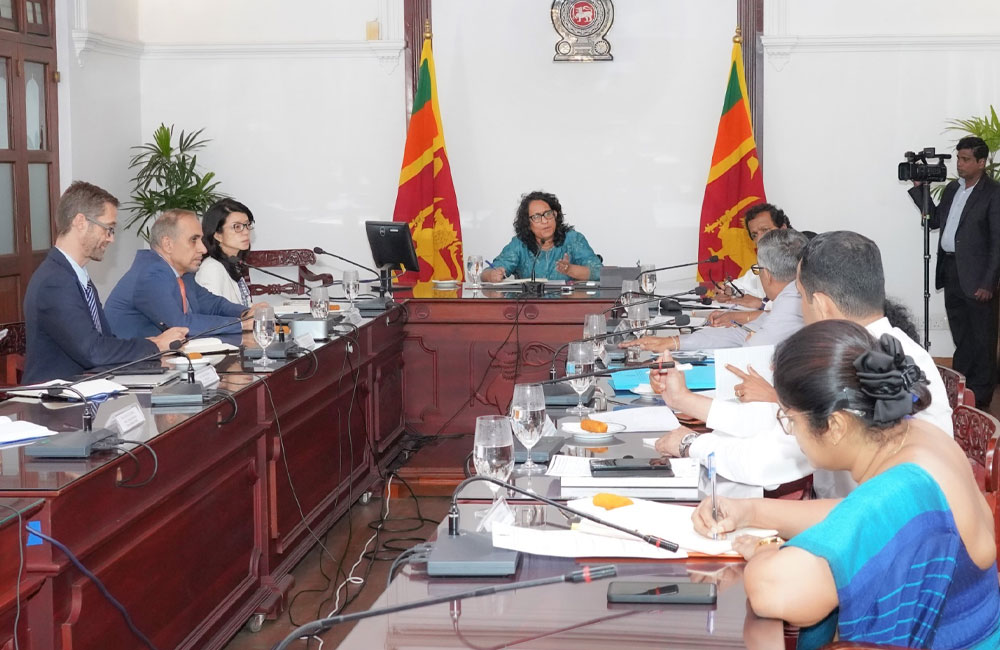
PM Stresses Need for Accurate, Real-Time Data to Strengthen Post-Disaster Decision-Making
Prime Minister Dr. Harini Amarasuriya underscored the essential role of accurate and timely data in enabling effective decision-making during post-disaster recovery, at a meeting held on December 8 at the Prime Minister’s Office. The discussion centered on reconstruction planning, with particular attention to regions repeatedly affected by flooding.
Representatives from the United Nations Development Programme (UNDP), the World Bank, and the United Nations Office for Project Services (UNOPS) took part in the meeting, which was convened under the Prime Minister’s patronage.
Addressing the gathering, the Prime Minister noted that reliable, systematically gathered information is vital for day-to-day decision-making after a disaster. She emphasized that strong data flows guide both immediate response efforts and long-term recovery strategies.
During the briefing, officials outlined the post-disaster needs assessment tools currently in use, including RAPIDA and the Global Rapid Post-Disaster Damage Estimation (GRADE) system. These UNDP-led assessments integrate GIS technology, satellite imagery, and on-ground data collection to generate real-time, actionable insights. The tools help identify affected communities, infrastructure damage, debris levels, and land-use changes, thereby providing essential information for planning.
UNDP representatives reaffirmed their commitment to continued collaboration with the Government of Sri Lanka, expressing readiness to enhance partnerships aimed at improving the efficiency and impact of post-disaster response and reconstruction initiatives.
The meeting was attended by World Bank Country Manager Dr. Gevorg Sargsyan; UNDP Resident Representative Ms. Azusa Kubota; the South Asia Director for UNOPS; Secretary to the Prime Minister Mr. Pradeep Saputhanthri; Additional Secretary (Development) Ms. Sagarika Bogahawaththa; and officials from the Department of National Planning.
Prime Minister’s Media Division
2025.12.09
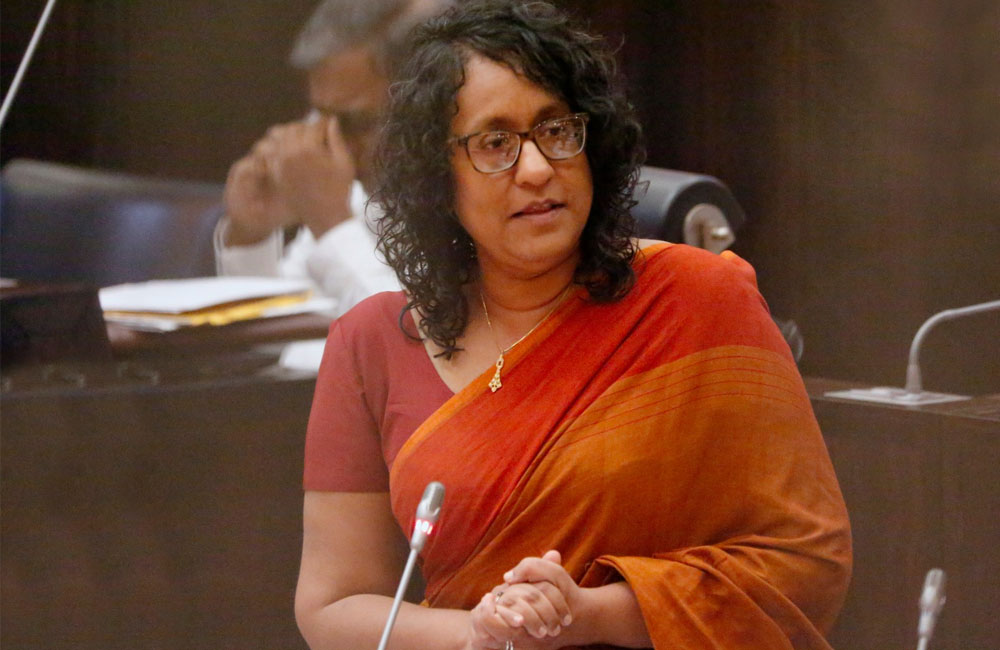

Storm Likely to Affect Sri Lanka
A developing storm system in the Bay of Bengal is expected to move toward Sri Lanka, bringing rainfall of around 75 mm, particularly to the Northern, Eastern, and North-Central provinces, the Department of Meteorology said.
While the predicted rainfall is not considered severe, officials note that even moderate showers could worsen conditions in areas already affected by recent flooding. The Irrigation Department, the Mahaweli Development Authority, and the National Building Research Organisation (NBRO) have been alerted to conduct impact assessments in vulnerable regions.
The BBC’s weather outlook also indicates that cloud formations over the Bay of Bengal may intensify into a storm and track toward Sri Lanka, resulting in heavier showers.
Commenting on preparedness measures, Deputy Minister of Land and Irrigation Aravinda Senarath said both the Irrigation Department and Mahaweli Authority are closely monitoring reservoir levels, especially with the northeast monsoon expected to activate in the coming days.
He noted that many major reservoirs are currently at spill level after the heavy rains brought by Cyclone Ditwah.
“If we experience more rainfall in the range of 150–200 mm, the situation could become risky. Teams are on standby to release excess water and manage the system safely,” he said.
The deputy minister added that small and medium-scale irrigation tanks suffered the most damage during the recent flooding.
Page 14 of 637